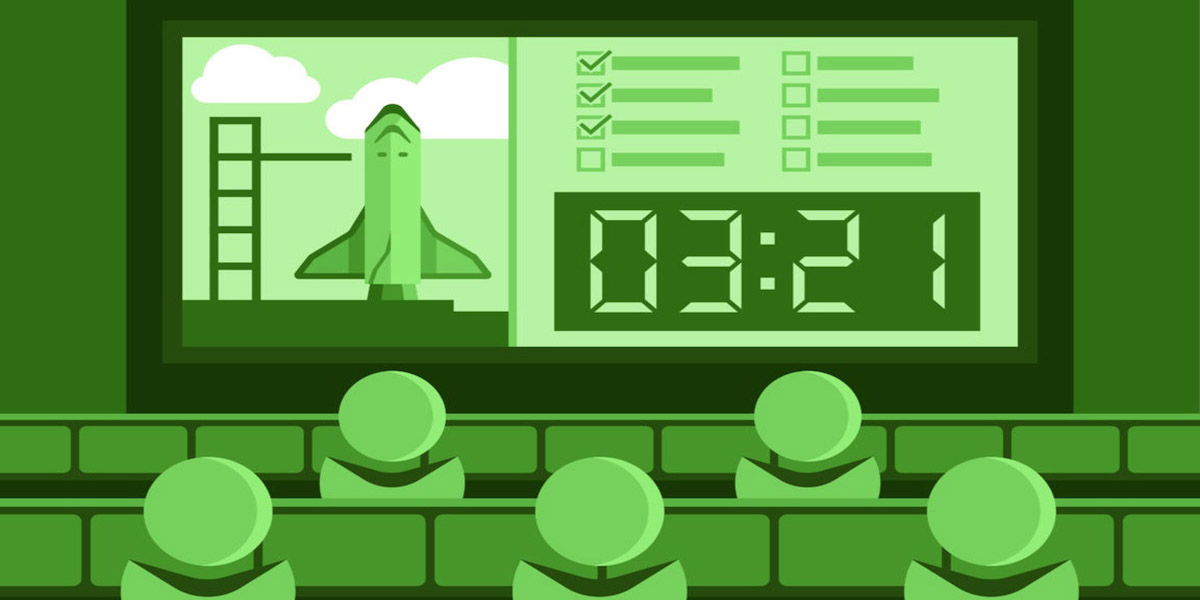How to Build a B2B Product Launch Timeline | Downloadable Template

For our most up-to-date article on product launches, click here.
To successfully launch a B2B product, you know you need a documented plan. You know that your organization and product need to be ready. And you also know you need a timeline. In this post, we’re sharing a very simple and easy-to-use template to help you create a launch timeline.
We created this template for one of our clients. They had a SaaS product that had already been on the market for several years, and they are in process of rolling out a totally redesigned product several months from now. Their sales cycle is long (sometimes more than a year) so, thanks to the launch timeline we created for them, they’re ten months ahead of the game for this product.
This launch timeline, coupled with sales readiness and launch strategies for new and existing customers, provides a framework for a successful B2B technology product launch — taken straight from our playbook. As you review the sample timeline, let’s point out a few key components:
1. Pre-Sales Planning
As you work on designing and refining the function and new UX/UI of your product, you’ll want to set sales goals (both for new and existing customers) and thinking through the migration plan for existing clients. Reference the first article in this series for migration and share-of-wallet recommended goals.
2. Marketing to New Vs. Existing Clients
For obvious reasons, you’ll want to sell to existing clients first. Arm yourself with a migration plan to eliminate fears and trepidation about this potentially disruptive process (depending on the complexity of your product).
Your timing for selling to new clients is important. Too early, and you’ll lose momentum and excitement for when the product is actually available; the fuse will burn out before the firework launches. Too late, and you may not reach the velocity you need leading into launch day; plus, you’ll miss out on the opportunity for pre-launch incentives that can help achieve sales goals.
3. New Product Demo
As soon as you have a good series of screenshots to show off the design of the new product, you can stitch those together into a pitch deck for the sales team.
The big question here: Will a new product release 5-6 months from now negatively affect sales today? Won’t prospective customers simply choose to wait for the new product? In our clients’ case, since their sales cycle with is long, we anticipate the positive growth of the new product at launch to usurp the loss of potential short cycle sales opportunities.
4. Launch Day
Maximize your product launch by choosing a specific, relevant date: company anniversary, significant trade show, conference, etc. This particular product launch will be released at our client’s user conference.
Though their sales team has already been teasing the new product in the marketplace for several months, launch day makes it official: the product is ready to purchase, migration can start, the new website launches, and PR efforts begin.
Don’t forget the power and insight of beta testing, as we discussed previously. Nothing can destroy the momentum of a new product launch more than product issues at launch that could have been caught during beta.
5. Pricing
A new product launch is the perfect time to adjust your pricing. The updated product is now new, improved, and — with attention to UX/UI — can certainly be positioned as more valuable than its predecessor.
Capitalize on this while you can. You can also create sales incentives that allow buyers to purchase the new product at “old” product pricing for a limited amount of time before the price increases. Again, your goal here is to create sales velocity, so there are several strategies you can explore to find which best suits your offering.
Other items you might want to add to our basic example:
- Customer Service Training: Arm your CSRs with anticipated questions and answers about the new product.
- IT Support: Know the ins and outs of implementing your new product from a technical standpoint, and have solutions ready.
- Internal Kickoff: Schedule a pre-launch kickoff with your entire team to prepare them for launch day.
Don’t forget to download the template here and use it to map out your launch runway. We hope it proves as valuable to you as it has to our clients. As always, if a product launch is on your horizon and you need help, we are ready!
.jpg)


